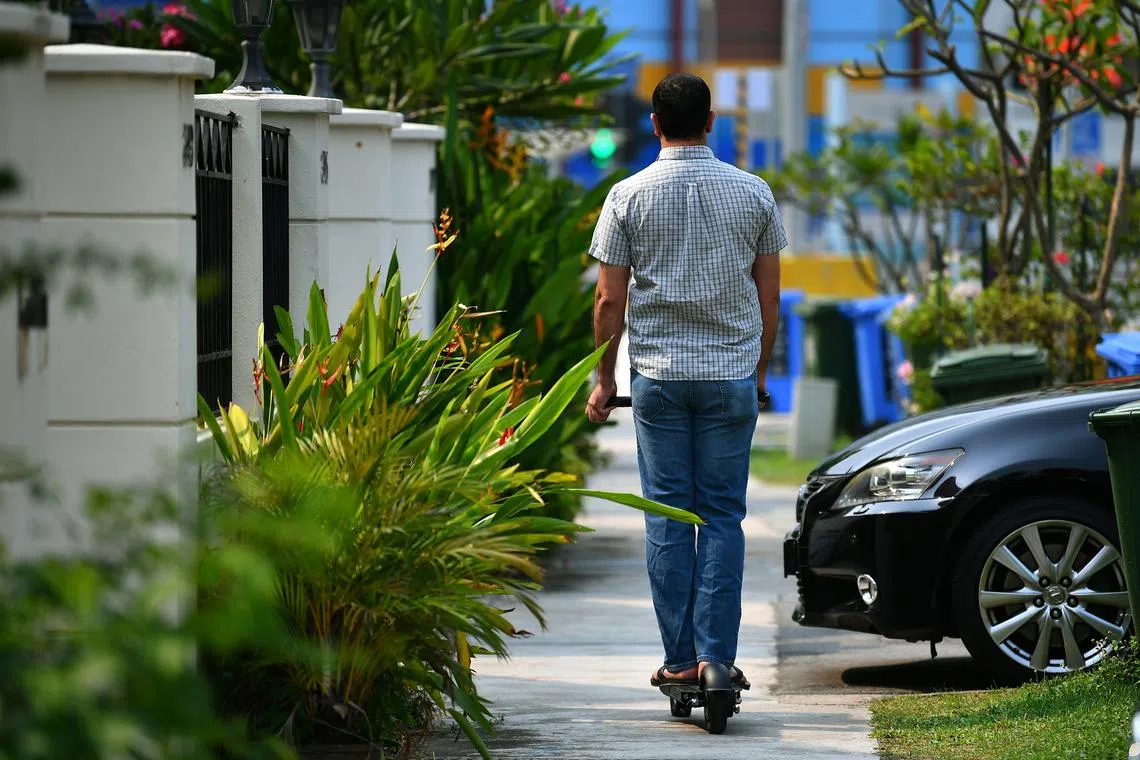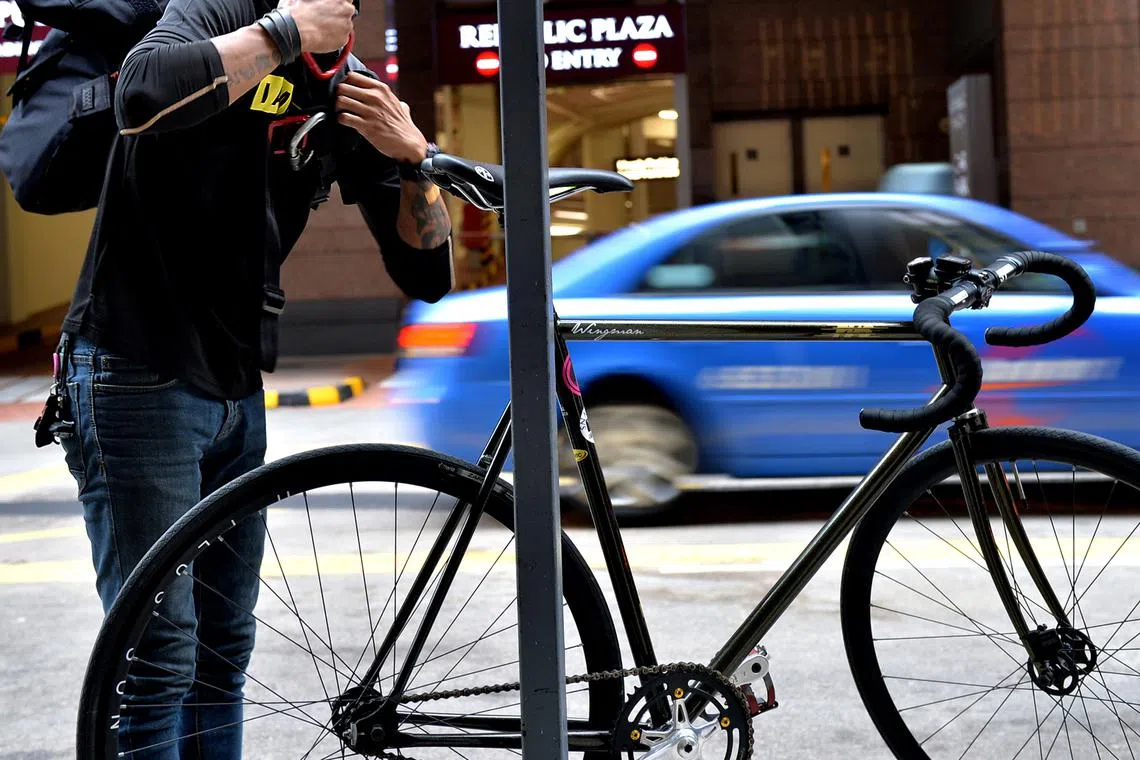35% fall in active mobility offences between 2021 and 2023: LTA data
Sign up now: Get ST's newsletters delivered to your inbox

Since April 2020, motorised personal mobility devices including e-scooters have been banned from footpaths.
ST PHOTO: LIM YAOHUI
Follow topic:
SINGAPORE – The number of active mobility offences has fallen over the past three years, with 5,228 such offences recorded in 2023, said the Land Transport Authority (LTA).
This is a fall of about 35 per cent from the 8,014 offences in 2021, and a 25 per cent drop from the 6,996 recorded in 2022.
The top three offences were riding an electric bicycle or a motorised personal mobility device (PMD) on footpaths, using a non-compliant active mobility device on a public path, and riding an e-bike or an e-scooter without a mandatory theory test certificate.
The non-compliant devices found by LTA included e-bikes, motorised PMDs and manual bicycles. These devices, LTA said, are often illegally modified and do not comply with safety standards or specified device dimensions.
Since April 2020, motorised PMDs – including e-scooters – have been banned from footpaths
Some e-bike riders The Straits Times spoke to cited convenience and time pressure as reasons why they sometimes use these devices on footpaths.
A food delivery rider, who gave his name only as Mr Ong, said he rides his e-bike on footpaths because at times the vendors he has to collect food from are “too far away from (the) parking lot”.
To reach such vendors situated far from the parking areas, he needs to make a considerable part of the journey on footpaths, and sometimes opts to ride his e-bike instead of walking to save time.
“I ride mostly on roads, (but) when there is a shortcut, I do not hesitate to ride on footpaths,” he said.
He added that some food delivery riders may use their e-bikes on footpaths as it helps conserve the battery of their devices.
Another food delivery rider, who gave his name only as Mr Goh, said he rides his e-bike on footpaths for convenience.
He said some riders take the footpath if it is a shorter route to their destinations, avoiding the longer route by road.
Mr Ong has been stopped by enforcement officers and fined before, while Mr Goh has not.
Another active mobility offence is riding a non-compliant device, such as a brakeless bicycle on a public road or path.
In August 2023, ST reported that there were 473 cases of people riding brakeless bicycles
The regulations came on the back of a 2020 case where a 13-year-old girl fell to her death
This regulation affects fixed-gear bicycles, known colloquially as “fixies”, which usually come without handbrakes and require a rider’s pedal resistance to slow down and stop.
National serviceman Zavier Lim said some riders of fixed-gear bicycles choose not to have brakes installed as they are unwilling to spend money, and enjoy the adrenaline rush of riding brakeless.
The 19-year-old, who used to ride brakeless before the regulations kicked in, said installing brakes does not make a huge difference to the riding experience but does change the bicycle’s appearance.
“We all should be grateful that they did not ban fixed-gear bikes as a whole, so I honestly think it is OK,” he added.
All bicycles on public paths and roads must have at least one working handbrake.

Fixed-gear bicycles, known colloquially as “fixies”, usually come without handbrakes and require a rider’s pedal resistance to slow down and stop.
PHOTO: ST FILE
Automation engineer Tay Seng Tee, who is an avid BMX rider, said the regulations ensure that riders cycle on public roads and paths with brakes for their safety. BMX is short for bicycle motocross, a cycling sport.
The 50-year-old added that installing brakes onto a bicycle makes it more stable while doing tricks and helps a rider stop in time during emergencies.
Since the regulations came into effect, he no longer rides brakeless on public paths and roads, and instead drives to training grounds such as skate parks where he does so.
Mr Tay said some riders may still choose not to install brakes as brakeless bicycles need less maintenance, since users need not maintain the brakes.
Additionally, brakes make bicycles heavier, which he added can hinder tricks and “reduce efficiency” in performing stunts.
Mr Tay said that, ultimately, the rules help to ensure responsible behaviour on the roads.
“You can ride with brakes, so that you can ride safely,” he added.
First-time offenders caught riding a bike without brakes on public paths can be fined up to $10,000 or jailed for up to six months, or both.
Those caught doing so on public roads for the first time can be fined up to $1,000 or jailed for up to three months, or both.


